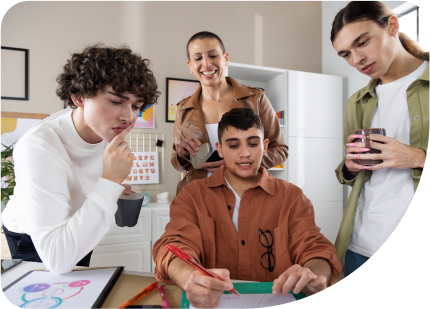BRB stands for “Be Right Back,” and this BRB slang term refers to a temporary absence on social media and in text messages. Essentially, the brb definition signifies that you’ll return shortly to a conversation after stepping away briefly.
Social media users across platforms like Facebook, Twitter, Instagram, and messaging apps regularly use BRB to maintain conversation flow while attending to quick tasks away from their devices. This abbreviation creates clear expectations about availability during online interactions.
The term BRB matters because it establishes proper etiquette in digital conversations by signaling temporary departures without abruptly ending discussions.
Origin and History of BRB
BRB first appeared in an Apple II Development Forum on January 3, 1989, when multiple users typed “brb” to indicate they were temporarily leaving the chat room. The abbreviation emerged from early computer bulletin board systems (BBS) and chat rooms where typing speed and character efficiency were valuable.
Computer enthusiasts and early internet adopters created BRB as part of a growing collection of chat acronyms designed to streamline communication in text-only environments. These early online communities needed quick ways to communicate status changes.
BRB spread to mainstream usage with the rise of America Online (AOL) and instant messaging services in the 1990s. By 1996, the term had become standardized in online lexicons and English dictionaries of internet slang. The BRB meaning in chat contexts quickly became universal across different platforms and user groups.
Key moments that popularized BRB include its integration into AOL Instant Messenger in the late 1990s, its appearance in early text messaging when character limits were strict, and its adoption in internet memes like “Going to the moon, BRB” with LOLcats images around 2006.
How to Use BRB on Social Media
BRB works best in real-time conversations when you need a short break but plan to continue the discussion. Whether the brb meaning is from a girl or a guy, it is used in chat applications, messaging platforms, comment sections, or live streams when stepping away for a few minutes.
Examples of authentic BRB usage include:
- “Need to answer the door, brb”
- “BRB, grabbing coffee”
- “Phone call coming in, brb in 5”
- “BRB – dog needs attention”
Platform-specific variations exist across social media. On Twitch and gaming platforms, streamers announce “BRB” before short breaks. Instagram and TikTok users might post “BRB” stories when taking brief social media breaks. Twitter users often add timeframes: “BRB in 10 mins”.
Common hashtags associated with BRB include #BRB, #BeRightBack, #QuickBreak, and #BRBmoment. These tags sometimes accompany temporary absence announcements or pause notifications on content creation schedules.
Common Mistakes and Misunderstandings
BRB is sometimes confused with similar acronyms like AFK (Away From Keyboard) and GTG (Got To Go). While BRB indicates a short absence with intent to return soon, AFK suggests a longer absence from the device, and GTG signals ending the conversation entirely.
Generational differences exist in BRB usage. Gen Z users might use BRB more casually or ironically, while older generations tend to use it literally and expect a prompt return. Younger users might substitute BRB with emoji combinations like 🏃♂️💨 to indicate temporary departures.
Avoid using BRB in formal business communications, job applications, or professional emails where full phrases are expected. The BRB meaning business professionals should understand is that this abbreviation is too casual for professional contexts. In business settings, it’s better to use complete phrases like “I’ll return momentarily” or “Back in five minutes” instead of BRB.
The meaning of BRB has evolved slightly over time. Originally indicating breaks of just 1-2 minutes in chat rooms, modern usage allows for longer absences up to 15-20 minutes. The expectation of return timing has relaxed as asynchronous communication has become more common.
BRB in Popular Culture
BRB appeared prominently in the 2004 film “Napoleon Dynamite” when the character Kip uses chat abbreviations while talking to his online girlfriend. The 2012 song “BRB” by Korean pop group Big Bang further cemented the term in popular culture.
Celebrities like Chrissy Teigen have used BRB dramatically on Twitter to signal temporary social media breaks. In 2018, she tweeted, “BRB, deleting Twitter,” before returning hours later, creating a viral moment.
The “BRB, crying” meme became popular around 2015-2016 and was used to express emotional reactions to touching content. Asking “what does brb crying” refer to would point to this meme, which evolved into variations like “BRB, screaming” and “BRB, dying” to express extreme reactions to social media content.
BRB holds cultural significance as one of the earliest internet acronyms to cross into mainstream language. It represents how digital communication has shaped modern conversation patterns and created new linguistic shortcuts that transcend online spaces into verbal communication, with people sometimes saying “BRB” aloud in face-to-face conversations.
Looking to understand more social media abbreviations beyond BRB? Check out our complete Social Media Glossary for definitions of all popular acronyms, slang terms, and abbreviations used across platforms like Facebook, Instagram, Twitter, and TikTok.




